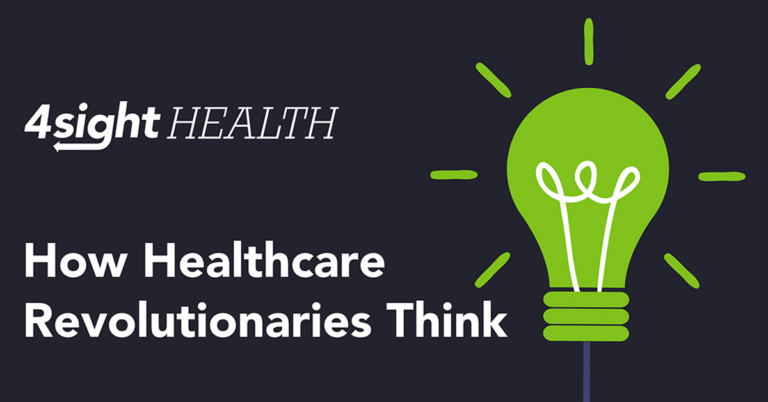July 22, 2021

Medicaid, Motherhood and America’s Future: Giving Birth to Better Maternity Outcomes
As the healthcare system evolves toward value, the women’s healthcare sector, and OB/GYN services in particular, represents a significant opportunity for improving outcomes and reducing costs at massive scale.

Listen to the authors discuss this article on the Cain Brothers Podcast, House Calls, available on Apple Podcasts, Spotify, and Google Podcasts.
Value-based care works best within defined populations for defined events or time periods. Maternity care fits that bill. In particular, coordinated care that improves the health of Medicaid maternity patients and their babies would create exponential benefits for U.S. healthcare and society as a whole. This is not hyperbole. Medicaid currently funds almost half of all births in the U.S. Yet, the U.S. maternal mortality rate is almost twice that of all other wealthy nations. [1] Many Medicaid mothers are under-served and lack routine access to preventive care and timely interventions throughout the maternity episode, from pre-natal to postnatal care.
The problem lies in how we pay for that care. Under Medicaid, fee-for-service (FFS) payments do not incentivize physicians and hospitals to actively coordinate maternal and social care services that can improve the health of mothers and newborns. Instead, they reward more costly interventions (such as neonatal intensive care and c-sections) over less costly and intensive services (use of midwives, post-partum home visits) that could enhance health outcomes and lower costs.
Complicating matters, Medicaid’s low payment rates often place OB/GYN practices, clinics and birthing centers at risk of financial insolvency. Racial, regional and socioeconomic disparities also contribute to America’s dismal performance.

Healthy Medicaid births are fundamental to America’s long-term prosperity. Gaps and deficiencies in Medicaid maternal care contribute to lifelong health disparities and compromise America’s future. As Andrea Balogh, Division President and General Counsel of Women’s Health USA (WHUSA) observes, “Pregnancy is not a disease. It’s a natural part of life. But we have to stop paying for it like it’s a disease.”
What can be done to give mothers and newborns the care they need? The answers are simple, cost-effective and low-tech: less intrusive deliveries; more coordinated and consistent pre-natal / post-partum care; targeted social and healthcare support services; better education and communication; and shared decision-making with mothers and families.
Fortunately, innovative companies are not waiting for reform to tackle the challenge of improving Medicaid birth outcomes. They are changing maternity care for Medicaid patients through proactive service provision. This article describes a number of organizations and care models that are moving the needle on OB/GYN services and outcomes.
Revamping Medicaid maternity care, paying for value and organizing support services more effectively to improve the health of mothers and babies should be as American as apple pie. Our future depends upon it.
Systemic Barriers to Better Maternity Care
Despite advances in medical sciences, the U.S.’s maternal mortality rate began increasing in the late 1990s as the emphasis on hospital-based services displaced community-based care and racial, ethnic and socioeconomic disparities became more pronounced. [2]
Between 2000 and 2014, U.S. maternal deaths increased 24%. By 2019, the rate for maternal deaths reached 17.2 out of every 100,000 live births. 60% of these deaths are preventable. [3] In all other industrialized nations, the maternal death rate has fallen during this time period. [4]

Most maternal deaths (50%) occur the day after the mother gives birth, but a significant percentage occur weeks or months following delivery. Improving maternal health is not as complicated as many other routine medical interventions that we have long ago successfully addressed. Better care coordination/support and more consistent pre- and post-natal care are key to reducing the number of maternal and infant deaths as well as the percentage of low birth-weight babies born with complications.
Social determinants of health also influence negative outcomes in maternal and childcare. These include poor nutrition, inferior care access, and a host of challenges relating to housing, transportation, security and education. Race is a significant differentiator. Black women account for 65.1% of Medicaid births and are three times more likely to die in childbirth than white women. [5]
Maternal mortality rates also differ state to state. California has the lowest rate in the U.S. at only 4 deaths per 100,000 live births, followed by Massachusetts, Nevada, Connecticut and Colorado. These states have instituted evidence-based improvements to Medicaid maternity care. Connecticut, for example, increased access to midwifes with advanced nursing degrees.
In contrast, Louisiana, Georgia, Indiana and New Jersey have the highest rates of maternal mortality. Notably, an alarmingly high death rate for Black mothers at 102.3 per 100,000 underlies New Jersey’s rate of 38.1 maternal deaths per 100,000 live births. [6]
Maternal mortality rates are higher in rural areas (29.4 deaths per 100,000) than urban (18.2 deaths per 100,000). Access to services, particularly during emergencies, is one reason, exacerbated by hospital closures in disadvantaged communities. [7]
Insurance coverage is another impediment. About 10% of new mothers lack health insurance. 20% of new mothers avoid prenatal care because of costs. More than half worry about not being able to afford care. [8]
Doctors, clinics and hospitals receive significantly higher payment rates through commercial plans than from Medicaid. In response, they provide preferential maternal services to commercially insured patients. This makes it even harder for Medicaid recipients to access care.
Policy remedies can overcome some of these challenges. CMS requires states to cover prenatal care and delivery and to cover postpartum care for at least 60 days after birth, but 37 states and the District of Columbia have extended postpartum care beyond 60 days. The American Rescue Plan of 2021 provided additional funding for that purpose. [9]
Like so many other areas of U.S. healthcare, Medicaid has enough funding to provide comprehensive services but distributes its funding in suboptimal ways. The emphasis on crisis care over preventive care, especially prenatal and postpartum, illustrates the problem.
The good news is that defining the scope and parameters of appropriate birthing services is straightforward. Paying for value (better outcomes at lower costs) is a no-brainer.
The Value Opportunities
Births represent the third most costly and resource-consuming service provided in hospitals. They account for 25% of all U.S. hospital admissions. Care intensity and costs soar when complications emerge before birth, during delivery and/or post-partum. [10] Reducing complications is fundamental to improving outcomes and containing costs.

CMS has a goal of converting half of Medicaid services to value-based arrangements by 2025.11 Currently, only 15% of Medicaid services are value-based. Bundling the maternity episode in a value-based payment arrangement would improve care by enhancing communication, coordination and transitions from prenatal to postpartum care.
As Lenny Castiglione, CEO of Ob Hospitalist Group, notes, “I don’t think people realize the challenge we face in terms of the number of providers who are unwilling to do Medicaid deliveries. But the size of that population represents a massive opportunity for U.S. healthcare.”
Value-based care works best by creating episodes for routine services with predetermined parameters and protocols. Care episodes exhibit the following characteristics:
- Defined events/encounters to control.
- A fixed population.
- The opportunity to shift care out of the hospital to lower cost sites.
- The opportunity for providers to increase value by serving as gatekeepers for that population, direct care appropriately.
Maternity / birthing checks each of these boxes. The episode is defined by distinct services provided before, during and after birth for a fixed population. Maternity care easily shifts to outpatient, clinic and home settings where care can be optimal. Within hospitals, opportunities abound for reducing costs through less intensive procedures. Around 50% of NICU stays involve low-risk newborns. Unnecessary C-sections increase procedure costs by 39%.
Gatekeepers enhance maternity care coordination. 65% of women view their OB/GYN as their most trusted healthcare advisor and their best healthcare referral source. This gives the OB/GYN enormous influence over care decisions and resource allocation. Unfortunately, the U.S. system doesn’t leverage their position and role throughout the birthing process.
The OB/GYN provider sector is fragmented, dominated by independent physicians and small group practices. Few organizations have the clout to negotiate value-based contracts with payers, including Medicaid, that compensate them for meaningful improvement in care outcomes. Instead, like most doctors, OB/GYNs receive procedure-based compensation which incentivizes overuse of unnecessary but covered procedures and underuse of necessary but uncovered procedures.
OB/GYNs often don’t see their Medicaid patients during prenatal care. Alternatively, they lose control of their patient post birth. In both instances, care coordination suffers and subpar and tragic outcomes increase.
As Lenny Castiglione observes:
“Challenges with health access and health equity are really stacked against the Medicaid population.”
Better Maternal Care Business Models
Numerous healthcare organizations understand the challenges embedded within U.S. maternal care and are striving to improve its consistency and quality. Growing maternal care businesses are well positioned to provide Medicaid maternal care more effectively. Here are several examples.

Enhanced OB/GYN Support
Women’s Health USA (WHUSA) [12] launched in Connecticut in 1997 to support independent OB/GYNs and other women’s health providers with management and administrative (MSO) services that streamline and improve business operations. Today, the organization serves over 600 providers across the U.S. Its goal is to keep independent practitioners in business to provide the highest quality of care possible.
To that end, the organization works to do the following:
- Improve patient and provider experience.
- Enhance the physical health of patients and the financial health of practitioners.
- Reduce costs for all stakeholders.
- Reward practitioners for better care outcomes.
Within its network of providers, WHUSA is working on new arrangements that are value based. These are starting to become more prevalent in the market.
As Andrea Balogh, of WHUSA, observes:
“Independent practitioners want to do the right thing, but too many patient needs go beyond the doctor visit. They’re simply not equipped to be social workers, mental health professionals, language translators or care coordinators. At WHUSA, we are working on ways to better coordinate care among providers while aligning patients with the social support systems they so desperately need. We’re doing this in ways that support our providers both financially and administratively so they can provide the best care possible to their patients.”
Hospital-based Obstetrics
Founded in Florida in 2006, South Carolina-based Ob Hospitalist Group (OBHG) [13] ensures that high-risk maternity patients receive consistent, high quality care from dedicated hospital-based OB/GYNs. OBHG’s aligned aim is to reduce burnout in OB/ GYN practitioners who work long, unpredictable hours with burdensome administrative and technological demands.
Today, OBHG’s operating footprint spans 33 states and encompasses 200 plus hospitals. It employs over 1,000 physicians and clinical support staff, making it the largest employer of OB/GYNs in the nation.
Traditionally, nurses are the first line of maternity care for expectant mothers who arrive at the hospital. These nurses communicate with the patient’s personal OB/GYN by phone to update them on the patient’s health and status until delivery is imminent.
In the hospitalist model, full-time obstetric doctors treat maternity patient’s needs 24/7. This constant, consistent access increases the quality and safety of the care received, especially for high-risk Medicaid patients. As OBHG CEO Castiglione puts it, “The Ob hospitalist is like the safety officer on labor delivery duty.”
Hospitals increasingly turn to OBHG physicians to oversee all labor and delivery patients, not just those who are high-risk, because of the gains in quality, experience and cost-reduction.
Despite being hospital-based, OBHG delivers appropriate care in a timely and efficient manner. As Castiglione observes, “Our physicians are not financially incented to give patients more care than they need.”
The results are striking: OBHG physicians reduce wait times and costs. Based on the company’s data, they perform 10% fewer c-sections in 67% of the hospitals they service. They have also reduced perinatal harm by 30%. It’s not surprising that payers and providers increasingly turn to OBHG to manage maternity care more safely and cost-effectively.
Federally Qualified Health Centers (FQHCs)
FQHC’s are non-profit, tax-exempt organizations that serve Medicare and Medicaid patients. Officially, there are approximately 1400 FQHCs in the U.S., though many thousands more clinics operate under the FQHC model to deliver primary care and other health-related services to low-income communities.
Founded in the 1950s on Chicago’s west side, Erie Family Health Center (now Erie FQHC) has always provided care to underserved immigrant and minority patient populations facing difficult social and economic circumstances. In the 1960s and 1970s, Erie expanded into primary and preventive care as well as family health, pediatrics, obstetrics, family planning and nutritional services. In the 1980s, the clinic became a Federally Qualified Health Center.
Today, Erie is among the largest community-based providers of maternal care services in Illinois. It has expansive contractual relationships with Northwestern and other regional hospitals to manage the in-hospital birthing process as part of a
coordinated-care episode. Medicaid covers about 62% of Erie’s patients. It employs social workers and case workers to investigate and resolve social needs that affect care outcomes.
As Nicole Kazee, Senior Vice President of strategy and business development at Erie, notes:
“Your health is not isolated from other things in your life, and pregnancy is no exception. If you’ve got other children for example, you may have trouble getting off work or getting away to make an appointment. We try to resolve that. Our whole model is to be the medical home for the patient.”
Though Erie treats maternity care holistically, it receives transaction-based payments. CMS pays Erie a volume-based fee for prenatal care per “encounter” and then for in-hospital deliveries for those same patients irrespective of the patient’s condition.
Birth Centers

Birth centers are outpatient facilities that provide care for labor, delivery and immediate postpartum needs. Appropriate for low-risk childbirth, birthing suites emphasize comfort and family involvement with clinical and emergency care on hand.
The 2018 Center for Medicare and Medicaid Innovations study of 45,000 pregnant women showed that birth centers, operated by midwives, lead to reductions in pre-term birth, cesareans, and low-birthweight babies. Their costs are 21% lower costs relative to other Medicaid maternity patients.
Despite these outstanding results, birth centers are rare in the U.S. This is due, in part, to low Medicaid payments that make financial sustainability difficult. [14]
Conclusion: Value-based Payment Delivers

Technology can facilitate these solutions and models. With simple communication tools and data analytics, providers can push messages to the right patients at the right time, monitor their health status, and guide them towards timely care and interventions. This can further reduce costly ED visits and the need for urgent interventions while supporting a healthy pregnancy through delivery and beyond.
Maternity care in the U.S. is in crisis but poised for rapid evolution. Providers, payers and policy-makers recognize that an uncoordinated system with misaligned incentives harms too many individuals, families and communities. The time for change is now.
As innovative organizations have consistently demonstrated, addressing mothers’ holistic needs comprehensively and efficiently improves maternity care outcomes. Given the size of the market and the level of need, Medicaid maternity care represents an enormous opportunity for growth and capital.
Medicaid’s children represent America’s future. The entire country benefits from the quality and continuity of the care they receive. Every healthy birth is an event worth celebrating.
Sources
- https://www.commonwealthfund.org/publications/issue-briefs/2020/nov/maternal-mortality-maternity-care-us-compared-10-countries
- https://www.commonwealthfund.org/publications/issue-brief-report/2020/dec/maternal-mortality-united-states-primer
- https://www.healthypeople.gov/2020/leading-health-indicators/2020-lhi-topics/Maternal-Infant-and-Child-Health/determinants
- https://www.thenation.com/article/society/maternity-fertility-black-women/
- https://www.cdc.gov/nchs/data/databriefs/db387-H.pdf
- https://worldpopulationreview.com/state-rankings/maternal-mortality-rate-by-state
- https://www.hrsa.gov/sites/default/files/hrsa/advisory-committees/rural/publications/2020-maternal-obstetric-care-challenges.pdf
- https://www.urban.org/sites/default/files/publication/102296/uninsured-new-mothers-health-and-health-care-challenges-highlight-the-benefits-of-increasing-postpartum-medicaid-coverage.pdf
- https://www.nytimes.com/2021/03/14/upshot/stimulus-saving-mothers-medicaid.html
- https://www.hcup-us.ahrq.gov/reports/statbriefs/sb204-Most-Expensive-Hospital-Conditions.jsp
- https://www.hfma.org/topics/news/2020/09/cms-drops-mfar–launches-medicaid-value-based-payment-push.html
- https://www.womenshealthusa.com/
- https://www.obhg.com/
- https://cdn.ymaws.com/www.birthcenters.org/resource/resmgr/insurers-employers/Getting_Payment_Right-FEB202.pdf
Co-author
 Christian Pesci is a Managing Director in the Firm’s Corporate M&A Advisory practice focusing on physician and multi-site healthcare services, including leading the Firm’s efforts in animal health, dental, women’s health/fertility and other practice areas. Prior to joining Cain Brothers, Mr. Pesci was an Associate Vice President in the healthcare investment banking group of Morgan Keegan. Mr. Pesci began his investment banking career at Shattuck Hammond Partners, where he focused on supporting M&A advisory, tax-exempt capital markets, and strategic advisory assignments for clients in the healthcare services sector. Mr. Pesci earned a BA in Economics from Colgate University.
Christian Pesci is a Managing Director in the Firm’s Corporate M&A Advisory practice focusing on physician and multi-site healthcare services, including leading the Firm’s efforts in animal health, dental, women’s health/fertility and other practice areas. Prior to joining Cain Brothers, Mr. Pesci was an Associate Vice President in the healthcare investment banking group of Morgan Keegan. Mr. Pesci began his investment banking career at Shattuck Hammond Partners, where he focused on supporting M&A advisory, tax-exempt capital markets, and strategic advisory assignments for clients in the healthcare services sector. Mr. Pesci earned a BA in Economics from Colgate University.





